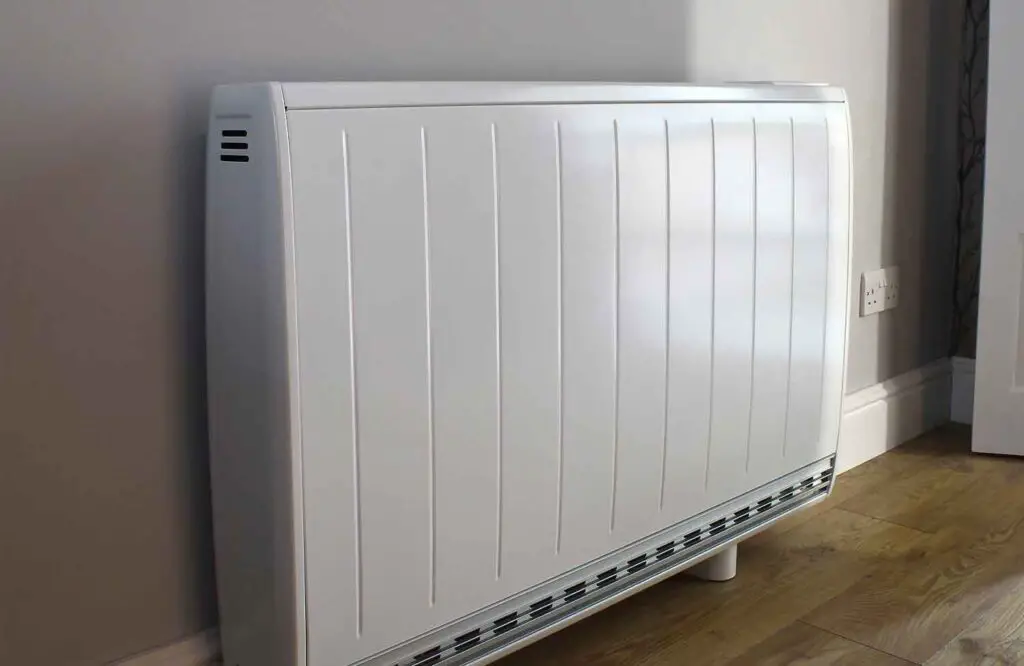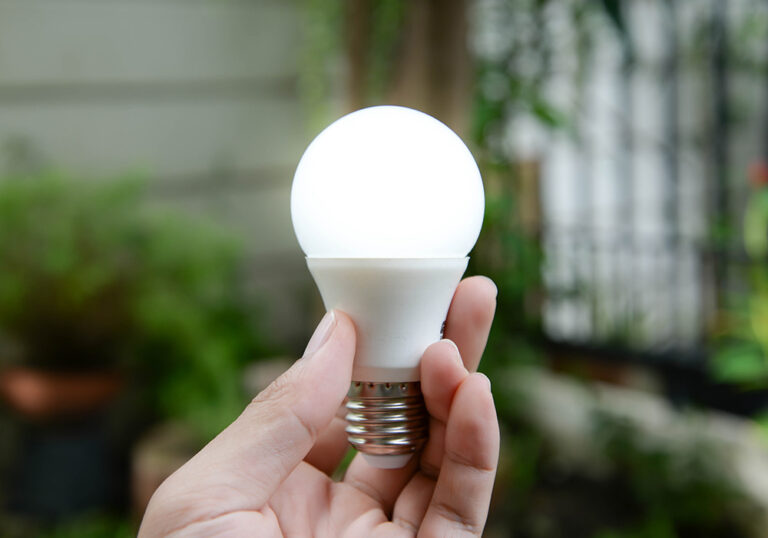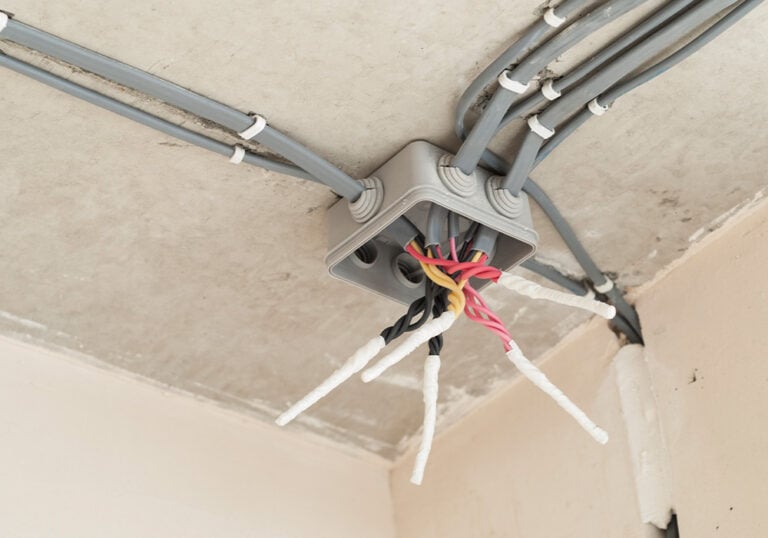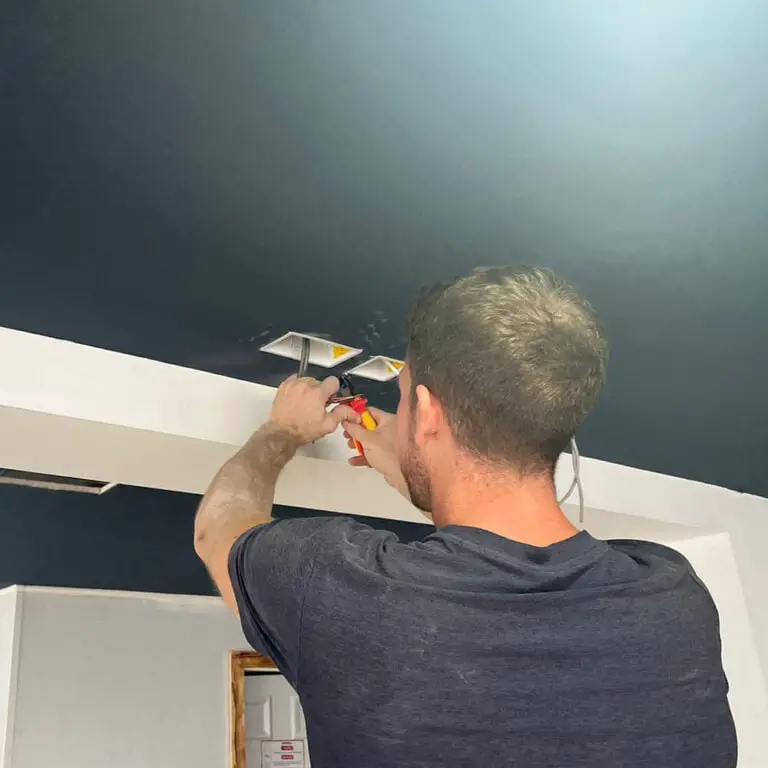What Are Electric Storage Heaters and How Do They Work?
Electric storage heaters are a low-cost, 100% energy efficient alternative to traditional heating systems. They draw the entirety of their energy during off-peak hours, before releasing their heat throughout the following day. Thanks to this mode of operation, electric storage heaters incur the lowest running costs possible while efficiently heating your home. They’re a great choice for those trying to economise their utility bills by keeping heating expenses to a minimum.
What Are Electric Storage Heaters and How Do They Work?
An electric storage heater is a type of electric heating appliance that draws electricity exclusively during off-peak hours. The storage heater generates heat during the night, using electricity when costs are at their lowest, then releases the heat throughout the following day. This mode of operation enables you to heat your home during the day at the lowest cost possible.

As is the case with other types of electric heaters, electric storage heaters contain an internal heating element. In other appliances like electric fireplaces and space heaters, the heating element is a metal coil; a fan-forced blower passes cool air over the hot coil, before expelling the warmed up air back into the room. Electric storage heaters, on the other hand, use ceramic or clay bricks as their heating element; these bricks are designed to retain heat for later use rather than producing instant heat like the previously mentioned heating elements.
To further explain their mechanism, electric storage heaters generate heat by drawing electricity during the night. At this time, electricity costs are at their lowest thanks to off-peak electricity tariffs like Economy 7 or Economy 10 – refer to the information in the following section if you’re unsure what this means. The highly-insulated storage heater retains the heat it generates during the night within the bricks in the unit. Throughout the following day, the heater then releases its stored heat to warm up your home.
What Are Off-Peak Electricity Tariffs?
Electricity suppliers offer electricity at a lower price, known as off-peak tariffs, during hours of low demand. Suppliers typically offer off-peak tariffs during the night and sometimes on the weekends. At these times, offices and factories use less electricity and therefore put less strain on the National Grid. The lower demand during off-peak hours allows suppliers to supply energy at a lower cost than times of peak usage.
The most common off-peak tariff is known as the Economy 7 tariff. Households on this tariff are allowed 7 hours of cheaper electricity overnight when general demand is low; these hours usually span from midnight until 7am during the winter, or from 1am to 8am in the summer. Some suppliers even offer Economy 10 tariffs that provide as much as 10 hours of cheaper electricity to the household.
On an off-peak tariff, using electricity during off-peak hours costs a fraction of the price of daytime electricity usage. In other words, you can use just as much electricity at night while paying less than the usual daytime tariff. This is where the significant benefit of an electric storage heater comes in; the heater draws all of the power it needs during off-peak hours, before expelling the heat during the day. It generates heat when costs are at their lowest to then provide you with the heat when it’s most necessary.
Are Electric Storage Heaters Energy Efficient?
Electric storage heaters are one of the most energy efficient types of heating systems available. The majority of storage heaters are 100% energy efficient; in other words, 100% of the power that a storage heater uses will turn into heat for your home.
With heating systems, energy efficiency refers to the amount of usable heat the system produces versus the amount of heat it wastes. For example, fuel-burning heating systems like traditional fireplaces or gas central heaters are never 100% energy efficient. These systems lose much of their heat in the byproducts that arise from the fuel’s combustion, i.e. in their smoke or other waste fumes. Gas systems are typically between 50% and 90% efficient, whereas the efficiency of wood or coal-burning stoves can be as little as 5%.
Electric storage heaters, on the other hand, produce no waste byproducts, neither in the generation nor release of their heat. As a result, no energy or heat is wasted in the running of the heater; it will convert 100% of the energy it draws into usable heat for your home. This means that you will make the most out of every penny you spend on the running of the unit. Also, if your supplier offers renewable energy tariffs, your storage heater will heat your home while producing zero carbon emissions.
Are Electric Storage Heaters Easy to Install?
Electric storage heaters are relatively easy to install compared to other types of heating systems. As they don’t burn real fuel, storage heaters do not require ventilation like other traditional heaters. They are therefore one of the cheapest and easiest types of heating systems to install.
Fuel-burning heaters like gas or wood-burning fireplaces give off harmful emissions as a byproduct of their fuel’s combustion. Such emissions like cO2 and smoke can pose a serious hazard to your home and those who live within it. Because of this, it’s necessary to also install flues, chimneys, vents, or pipework when installing traditional heating systems. You may end up spending more towards the installation of your heating system if your home doesn’t already have the appropriate ventilation system.
Electric storage heaters, however, do not contain any burning-fuel, give off no harmful emissions, and therefore do not require ventilation. It’s still important to ensure that the unit has proper air circulation with no obstructions or coverings; apart from this, no extra installations are necessary to create a specific ventilation system for the heater. You’ll only need to pay the cost of the unit’s installation by a certified electrician.
Will I Be Able to Repair an Electric Storage Heater?
With fewer parts to maintain, electric storage heaters are less likely to need repairs than traditional heaters or fireplaces. While other heating systems have burners, pumps, and valves, storage heaters are simple self-contained units with no ventilation systems necessary. They are therefore less likely to break down as they lack many of the parts that other heaters require.
With that said, like all electric appliances, it’s still possible for your electric storage heater to run into problems occasionally. You can follow these troubleshooting steps in the rare case that your storage heater stops working:
- Check the heat input and output controls are both set correctly. To reiterate, you need to set the heat output control on its minimum setting at night to allow the unit to recharge.
- Refer to the user manual for your model of storage heater. The manual will provide you with specific usage and troubleshooting advice for your heater.
- If none of your storage heaters are working, check your home’s breaker box. All of your heaters malfunctioning at once indicates a potential tripped circuit breaker; flipping the tripped switch should bring your heater back to life. If this is a recurring issue, you should contact an electrician for further advice.
- If only one of your heaters stops working, it’s more likely that the issue lies with the unit itself. In this case, you’ll need to look into getting the unit repaired or replaced by a specialised electrician. Try calling the customer service number for the manufacturer of your heater; they will be able to advise you on a list of approved electrical contractors to repair your unit.
Can I Remove an Electric Storage Heater After Installation?
You can remove an electric storage heater relatively easily after installation. If you want to reposition or get rid of storage heaters in your home, it isn’t difficult to disconnect them; how you go about this will depend on how the heaters were originally wired into the room.
Storage heaters can either be plugged into a wall socket or wired directly into your home electrics. If the heater is plugged into a socket, you simply unplug it and remove it from the wall. If it’s wired into your home electrics, it’s a better idea to have a professional electrician remove it safely.
How Do You Use an Electric Storage Heater?
The majority of electric storage heater models are wall-mounted, looking similar to regular radiators. They have a basic set of control knobs for heat input and output; these allow you to adjust how much heat the unit retains overnight and how much it releases the following day.
1. Set Heat Input
Using the heat input control, you initially set the level of heat that the storage heater generates and retains overnight. This setting has the most influence on the running costs of the unit; you can adjust the heat input, thus determining how much power the unit draws overnight to generate and store heat.
If it were forecast to be cold the next day, you would set the heat input on a higher setting. Oppositely, if you expect it to be warmer, you could reduce the heat input to save on running costs. For example, during the winter, it’s likely you’ll need to set the heat input to its maximum setting. However, you can reduce the heat input during the spring and autumn when temperatures aren’t as cool.
2. Set Heat Output
You can then use the heat output control the following day to release the storage heater’s heat into your home. As the heat is already contained within the heater, this setting has little impact on the unit’s overall power usage. The output controls are also fully adjustable to enable complete control over the release of the heat throughout the next day.
The higher the output setting, the faster the storage heater will release its heat. Storage heaters will still release heat even on their lowest output setting; they just do so much more slowly and over a longer period of time. Once the storage heater releases all of its heat, it won’t be able to generate any more until the nighttime. It’s therefore key to set the heat output controls according to your daily routine and typical heating requirements.
Tips on How to Use An Electric Storage Heater Most Efficiently
Follow these handy tips to make the most out of your electric storage heater at the lowest cost.
Check Your Supplier’s Off-Peak Times
As we’ve explained, your supplier will provide an off-peak tariff that applies to hours of low demand. The exact timing of your off-peak tariff may vary depending on your particular supplier, where you live, and the current season.
You must find out when this off-peak period is in order to set your heat input controls appropriately. Get in contact with your electricity supplier to find out what tariffs are available and when; you can then set your heater to draw power solely when running costs are at their lowest.
Be Mindful of Heat Output During Day
As per the setting of the heat output control, your storage heater will release heat gradually throughout the day. You must set this control according to your usual daily routine to get the most out of the unit’s heat.
For instance, it’s likely that you’ll want to use the majority of the heat in the evening when temperatures get chillier. You can make the heat last into the evening by keeping the output control on the lowest possible setting during the day; you can then raise the output during the evening when you want the unit to release the most heat.
Turn off Heat Output At Night
Another important aspect of the storage heater’s heat output control is remembering to turn it off at night. If you leave the output setting on overnight, the heater won’t be able to store heat for the next day. You must therefore turn the output control down to its minimum setting before nighttime to allow the unit to recharge.
Avoid Using Supplementary Heaters
Avoid using any other plug-in heaters alongside your storage heater to supplement its heat output. This will only incur additional running costs at the full price of your regular electricity tariff. Economically speaking, it’s much better to raise the input on your storage heater overnight if more heat is necessary in colder weather.






